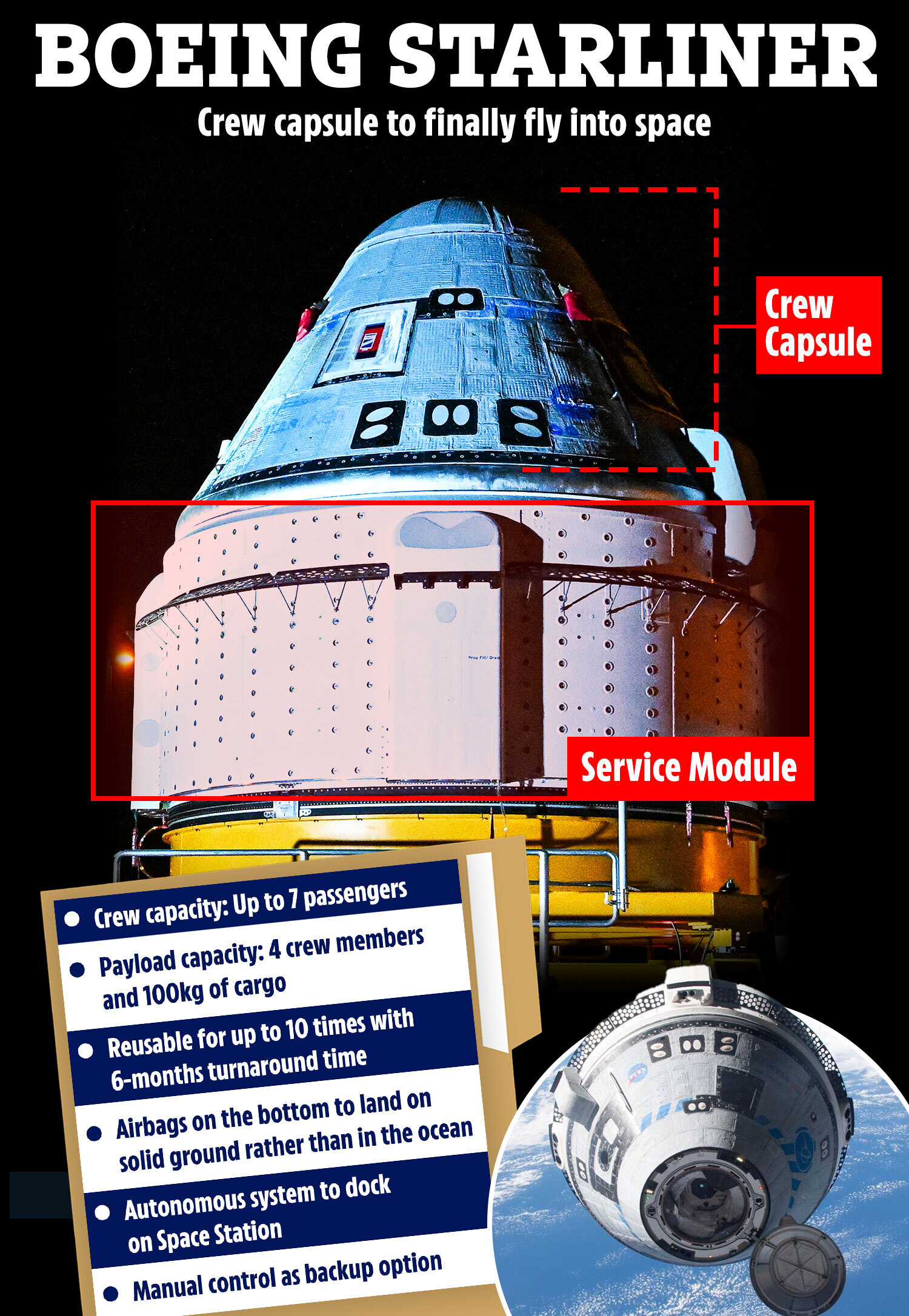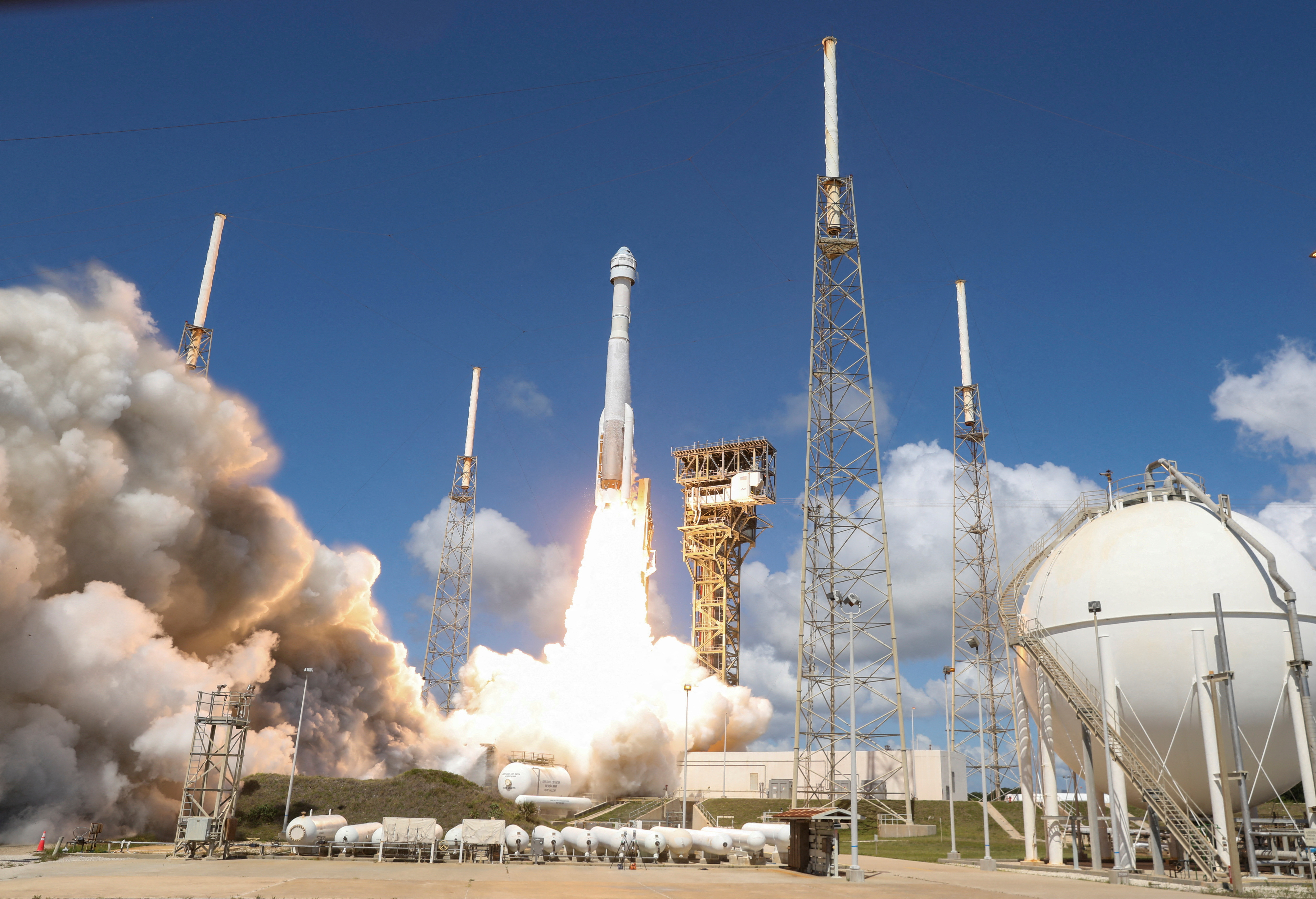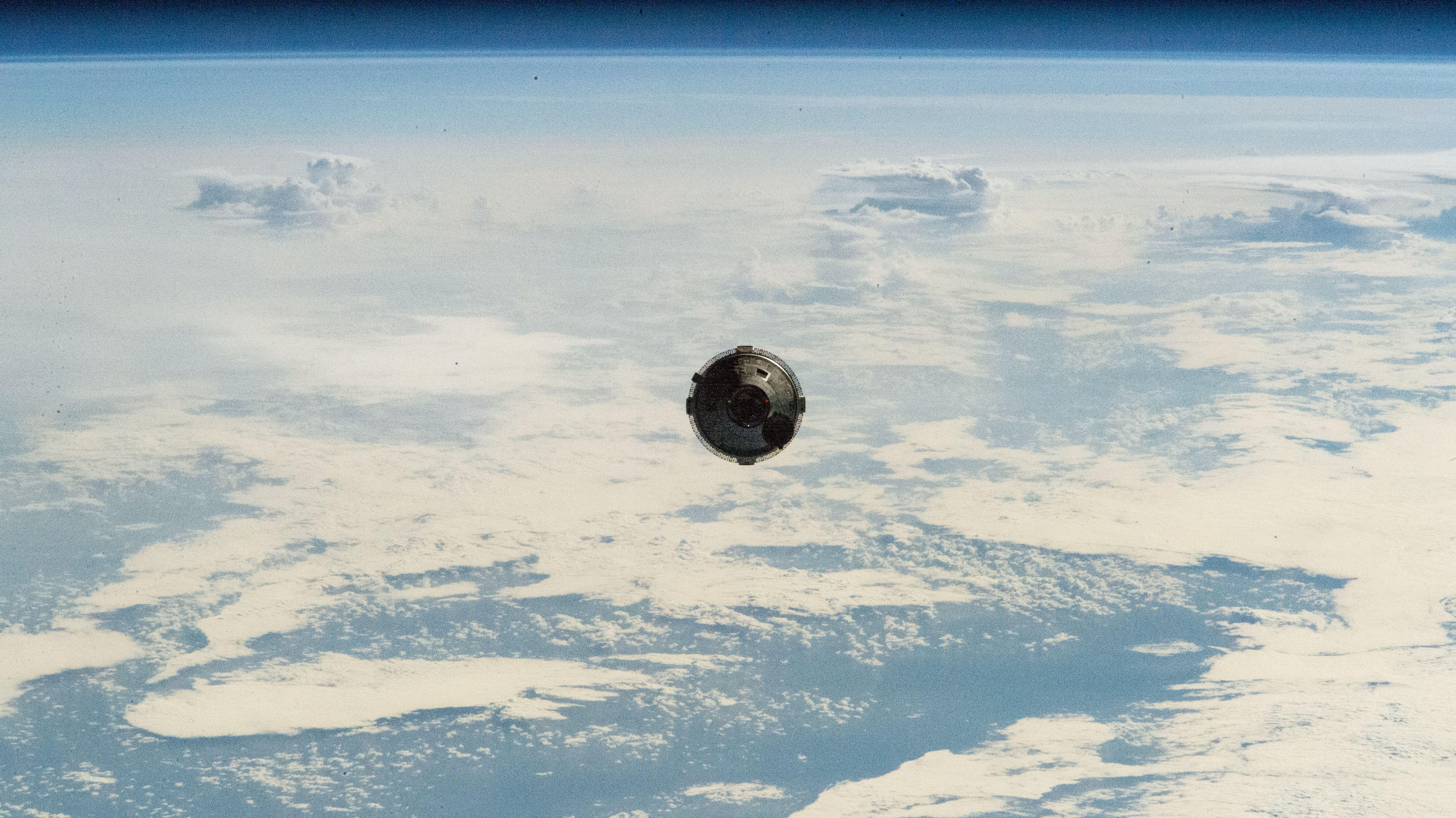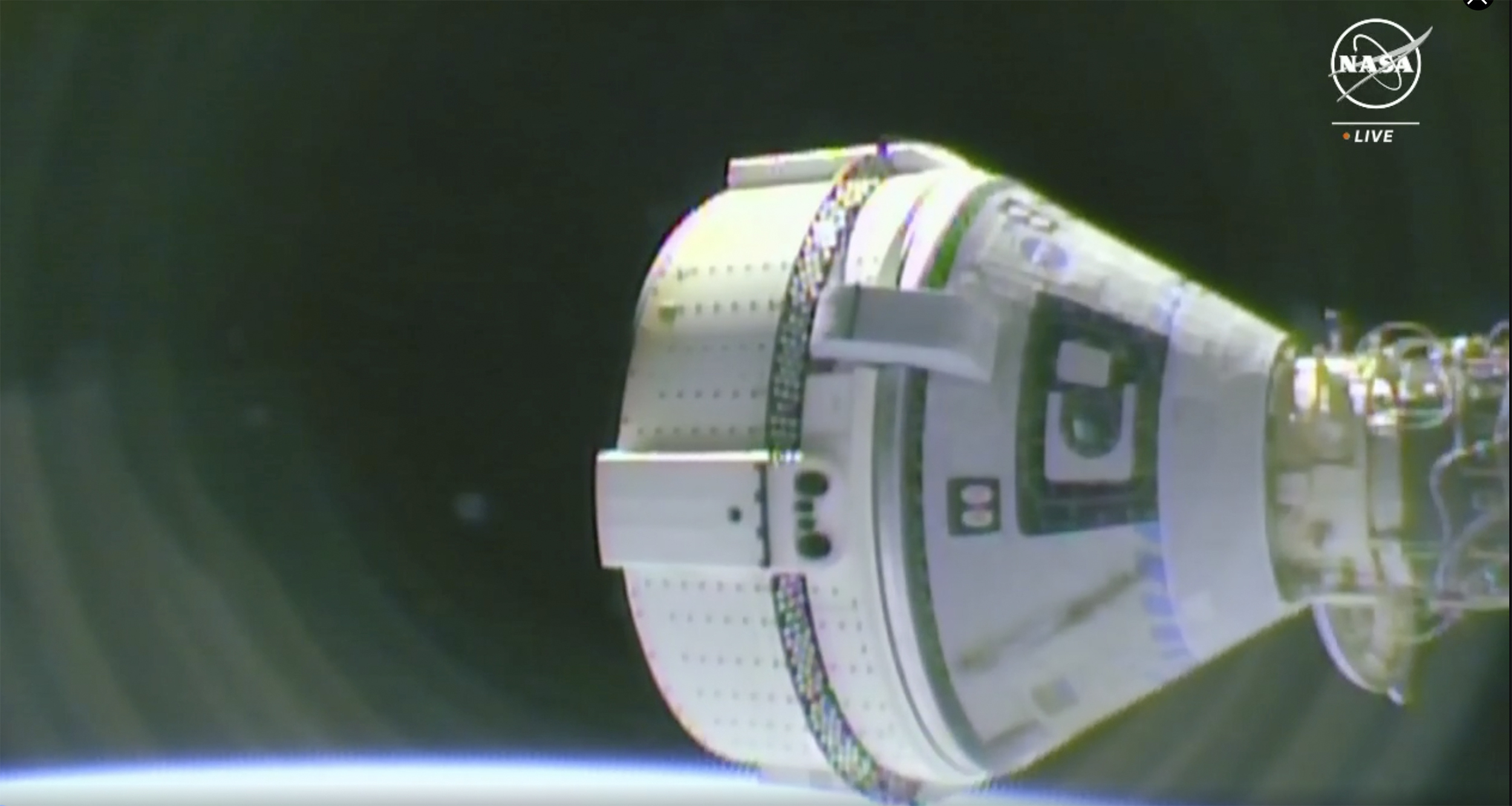
BOEING and Nasa are rushing to fix Starliner's thrusters as the return date for its two astronauts is pushed back once more.
The $1.5billion (£1.1billion) spacecraft finally achieved lift off on June 5 after weeks of technical troubles and delays but is now at risk of returning far later than originally planned.
Boeing Starliner's inaugural crewed flight to the International Space Station (ISS) was only meant to last a week but 14 days later it still remains in orbit.
Boeing has put the delay down to thruster troubleshooting that interfered with Starliner's first ISS docking attempt on June 6.
Five of Starliner's 28 reaction control thrusters failed during the final phase of the ISS rendezvous, although four of them eventually came back online.
Nasa and Boeing have been using the extra time to continue evaluating the issues and had scheduled a maintenance spacewalk to ensure everything was in working order.
Read more in Science
But that has now been pushed back to June 24, two days before Starliner's scheduled departure, which is still at risk of being delayed further.
It means astronauts Butch Wilmore, 61, and Suni Williams, 58, remain in limbo as to when they will be able to return to their own planet.
Nasa announced yesterday (June 18) that Starliner will conclude its first human mission to the (ISS) no earlier than June 26 - seven days from now.
Landing that day is scheduled to occur at White Sands Space Harbor in New Mexico at 4.51 am EDT (08.51 GMT).
Most read in Science
Starliner can undock at the ISS in case of emergency, but otherwise, testing is ongoing to learn more about the vehicle's systems.
During the livestreamed teleconference, Steve Stich, manager of Nasa's Commercial Crew Program, said: "We want to give our teams a little bit more time to look at the data, do some analysis and make sure we're really ready to come home."
An investigation into why five of Starliner's thrusters failed is ongoing.
As part of those efforts, however, Boeing and Nasa ground team members performed a thruster hot-fire test over the weekend alongside the astronauts.
One thruster wasn't fired during the test due to abnormally low pressure first observed during docking and will remain offline during the descent to Earth.
Despite this, everyone "feels very confident", according to Stich.
Wilmore and Williams have been testing Starliner's various systems in orbit, while ground teams have continued to analyse data to get a better handle on the thruster and helium-leak issues.
Teams had initially detected a small helium leak in Starliner's service module on May 15 and Stich has emphasises that testing in orbit has given the team confidence the spacecraft is recovering.
He said: "Saturday was a big day of understanding that helium leaks have gone down, and also understanding the thrusters have recovered, and that we can count on the thrusters for the remainder of the flight."
If the June 24 spacewalk is delayed again, however, then Starliner's undocking would become a priority, states ISS Program Manager Dana Weigel.
Speaking in Nasa's livestreamed conference, she also confirmed that spacewalking astronauts Tracy Caldwell Dyson and Mike Barratt would wait until after Starliner leaves to perform the extravehicular activity.
Mark Nappi, vice president and program manager of Boeing's commercial crew program, initiated that everything happening is natural for a test flight.
"We've always said this is a test flight, and we're going to learn some things. So here we are," he said during Nasa's press conference.
"We've learned that our helium system is not performing, albeit manageable. It's still working like we had designed it. So, we got to go figure that out."
Nappi added that the current situation is the perfect opportunity to fully understand the system's performance "without the pressure of schedule or time".
Yet this is just the latest in a long line of setbacks the Starliner has experienced throughout the duration of its mission.
The aircraft's launch to the ISS was originally set for May 6 but lift off was scrapped just two hours prior to take-off after a strange buzzing sound was discovered coming from an oxygen valve.
The rearranged launch date of May 17 was then pushed back to May 25 after teams detected the small helium leak in Starliner's service module.
Following a period of silence after the incident, however, a Nasa spokesperson soon confirmed that May 25 was also off the table as officials deepened their review into the leak.
In a blog post on May 22, Nasa announced that it was looking at the start of June for its next attempt.
It was stated that June 1 would be the earliest that the Crew Flight Test of Starliner could begin.
But the inaugural flight to the ISS on June 1 was abruptly halted despite having its two astronauts ready to go and strapped into their seats.
It represented the fourth time in as many weeks that the CST-200 Starliner's voyage into orbit had been delayed, with a "tech issue" cited as the latest reason.
READ MORE SUN STORIES
An automatic hold triggered by the computer that launches the rocket stopped Saturday's countdown clock, say reports, with just three minutes and 50 seconds until take off.
The bad luck keeps on coming...

Analysis by Jamie Harris, Senior Technology and Science Reporter at The Sun
Boeing really hasn't had much luck with its first crewed space launch.
The company attempted to send an uncrewed Starliner to the ISS in 2019 but it failed because of a bunch of issues - not to mention disruption caused by the pandemic - and came back to Earth early.
A second uncrewed test went ahead in 2022 just fine but a year later experts uncovered new problems which held up a launch carrying astronauts.
Of course, safety is first so it's a necessary step.
Experts working on the billion dollar project have attempted to downplay the launch's delay.
"I don't call it frustrating at all," Boeing's program manager Mark Nappi recently told press.
"We would like to have been further along at this time. There's no doubt about that. But we're here, and we're prepared, and we're ready to fly."
Space is also costly business, so Boeing - and Nasa - need this mission to succeed.
Development woes cost the firm a whooping $1.5billion in charges, as well as roughly $325million for Nasa in boosts to Boeing's $4.2billion fixed-price Starliner contract, according to securities filings and contracting data examined by Reuters.
Nasa also needs this to work if it's to keep up with China which is making huge advances to the Moon and beyond.


















